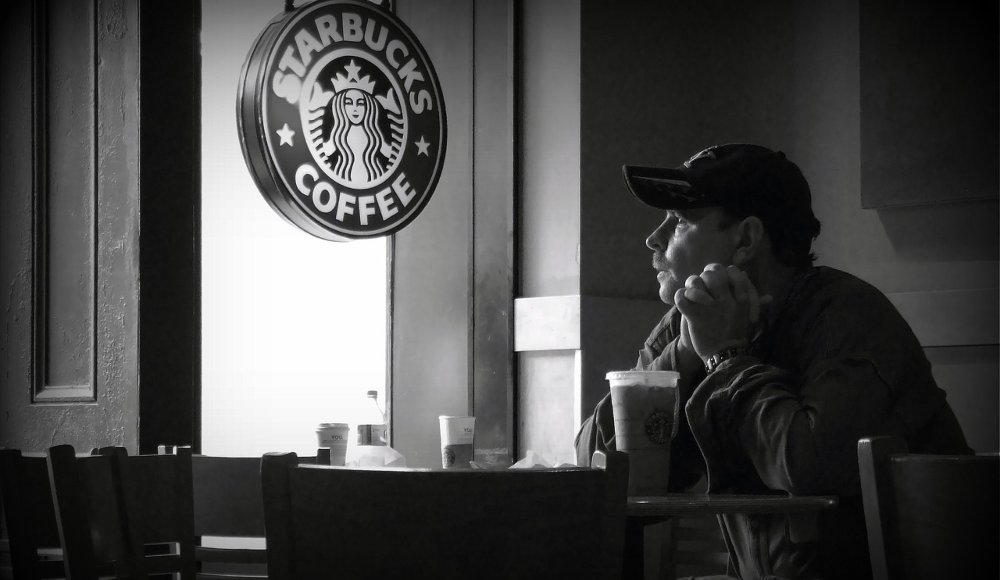Starbucks is in the news once again regarding ongoing union organizing efforts by employees. The recently reported “Red Cup Rebellion” walkout affected more than 200 locations nationally, including 15 Starbucks stores in Washington.
According to The Seattle Times, “The walkouts are so named because they are taking place on Red Cup Day, a yearly event that draws some of the highest sales of the year for the coffee giant. Customers can get a free reusable red Starbucks cup with the purchase of a holiday drink. The promotion drives more Starbucks fans to stores that striking workers claim are understaffed.”
Former CEO Howard Schultz set the corporate tone for the unionization dispute, in one instance saying that Starbucks is among a number of companies being “assaulted” by unionization campaigns.
Dmitri Iglitzin, a Seattle attorney whose union-side law firm, Barnard, Iglitzin & Lavitt LLP, is deeply involved in the nationwide campaign, says there’s a lot going on with the unionization effort that the public might not be aware of.
For example, National Labor Relations Board administrative law judges have issued 37 decisions (out of 39 total) finding that Starbucks committed more than 300 federal labor-law violations, including 36 unlawful firings, refusing to bargain, and unlawfully providing non-union workers higher wages and better benefits than workers who have sought to unionize. The NLRB has issued more than 67 additional complaints against Starbucks that are still awaiting disposition by administrative law judges. These complaints encompass about 200 charges and allegations of more than 1,600 violations, including 58 firings.
I recently spoke with Iglitzin about the Starbucks unionization effort. Here’s our conversation.
One question is how much input Seattle-area organizers had in calling the latest national walk out?
IGLITZIN: Starbucks Workers United is a robustly democratic grass-roots organization that responds to both the substantive desires and tactical ideas of its nearly 9,000 barista members as well as those of its elected officers, its staff, its organizers, and (to a lesser extent) its attorneys. Because Starbucks is headquartered in Seattle and the campaign has a large footprint in both Seattle and the Pacific Northwest generally, a lot of the ideas and strategies that culminated in the Red Cup Rebellion were meaningfully shaped by people locally.
Has Starbucks’ union-avoidance behavior changed since Schultz stepped down as CEO and from the board of directors?
IGLITZIN: No, not in any meaningful way. Maybe it’s a little bit less crude, without Schultz shooting his mouth off at regular intervals, but substantively, no different. In particular, Starbucks continues to roll out “improved wages and benefits,” which it ostentatiously and unlawfully proclaims will only be given to workers who are neither represented by the Union nor seeking such representation. It continues to do this even after NLRB Administrative Law Judge Mara-Louise Anzalone’s recent ruling that this is part of an unlawful nationally designed and implemented scheme to dissuade workers from seeking representation.
Similarly, Starbucks continues to refuse to meet with workers at any store to bargain a first contract unless the workers agree that no member of their bargaining committee (for example, even someone who cannot attend in person for health or geographical reasons) will be permitted to observe and listen to bargaining via Zoom. Starbucks continues to take this position even though the NLRB has filed a complaint – currently being adjudicated in front of an administrative law judge – alleging that this constitutes a bad faith refusal to bargain at 260+ individual stores.
How effective has Starbucks’ union avoidance been in comparison to other corporate efforts to defeat organizing drives? For example, by Walmart, Amazon, foreign-owned auto manufacturing plants in the South, and Boeing in South Carolina.
IGLITZIN: Approximately 360 separate Starbucks stores in the U.S. have now successfully unionized. Amazon, to date, has only had its Staten Island warehouse successfully unionize, and unions have made only limited, if any, inroads at Trader Joes, REI, Apple, and foreign-owned auto manufacturers, to name a few other well-known unionization targets. So, I would say the “organizing drive” at Starbucks is more successful than many other current organizing drives. But obviously, there is still no first union contract at any of the stores, and Starbucks continues to engage in a tsunami of vicious, unlawful, union-busting actions that dwarf even those used by Amazon, in terms of their sheer number, geographical coverage, and seriousness.
Did Schultz’s public promotion of Starbucks’ desire to resist the unionization “assault” affect the grass roots mobilization of employees to organizing efforts?
IGLITZIN: It galvanized workers to stand up for their rights. While hourly employees in the US are statutorily empowered to organize unions in their workplace, employers feel they have a “right” to aggressively resist. Even the most “progressive” employers, when faced with employees who desire to exercise their right to union representation, resort to the most aggressive avoidance tactics to defeat organizing efforts. In that regard Starbucks is no different from any other notoriously anti-union company in its desire to remain “union free,” and its willingness to take any measures, even those deemed unlawful, to accomplish that goal.
Discover more from Post Alley
Subscribe to get the latest posts sent to your email.

As to those NLRB actions, I’d like to read a decision or 2 to get the flavor. Can you recommend a particularly illustrative one? Link please. TY
https://www.nlrb.gov/case/19-CA-294579
https://www.nlrb.gov/search/case/19-CA-294579